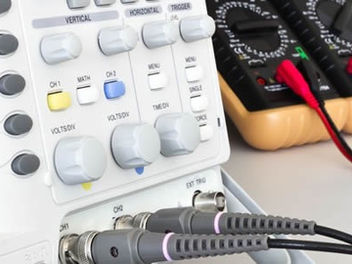How Often Should a Care Home Be Electrically Tested?
- Guy hudson
- Apr 25
- 7 min read
Electrical safety isn’t just a compliance checkbox—it’s a fundamental part of ensuring the wellbeing of every resident, staff member, and visitor in a care home. Unlike other commercial properties, care homes are filled with vulnerable individuals who may not be able to respond quickly to emergencies. For that reason, regular and thorough testing of electrical systems is not just recommended—it’s essential.
Whether it’s fixed wiring, portable appliances, or new installations, maintaining a safe electrical installation can help prevent fire, electric shock, or service disruptions. Care homes should follow a consistent schedule for electrical testing, making sure that any required remedial work is completed without delay. Keeping up with electrical safety protocols not only protects lives—it also demonstrates a commitment to quality care.
Regulatory Framework: Legal Requirements for Electrical Safety
In the UK, care homes must comply with several legal standards that govern the safety and reliability of electrical installations.
Electricity at Work Regulations 1989
This regulation obligates employers to ensure that electrical systems are safe and regularly maintained to prevent danger. It applies to both fixed installations and portable electrical equipment. Risk-based assessments determine how often testing should occur, meaning higher-risk environments like care homes need more frequent inspections.
Health and Social Care Act 2008
This legislation, overseen by the Care Quality Commission (CQC), mandates that all premises used for regulated activities—including residential care—must be safe, suitable, and appropriately maintained. A care home failing to provide evidence of regular electrical testing may be flagged during CQC inspections, potentially resulting in enforcement action or reputational damage.
Types of Electrical Testing in Care Homes
To meet these legal obligations and uphold a safe living environment, care homes should conduct two main types of electrical testing:
EICR – Electrical Installation Condition Reports
An EICR involves a detailed assessment of a property’s fixed wiring system, including sockets, lighting, fuse boards, and other integral parts of the electrical infrastructure. A certified electrician inspects the system for faults, wear, or potential hazards. The results are documented in an official installation condition report, which includes recommendations for any necessary remedial work.
Why it matters:
Identifies hidden risks like loose wiring or outdated components.
Ensures compliance with BS 7671 standards (Wiring Regulations).
Helps care homes plan maintenance and prevent outages or hazards.
PAT – Portable Appliance Testing
PAT testing involves inspecting and testing individual electrical appliances that are plugged into sockets—like kettles, toasters, electric beds, and hoists. It verifies that the equipment is safe for continued use and hasn’t developed faults due to wear or misuse.
Why it matters:
Protects residents and staff from appliance-related shocks or fires.
Keeps appliances like medical beds or mobility aids running safely.
Reduces liability and improves readiness for CQC inspections.
How Global Compliance Supports Care Homes
Global Compliance understands the unique demands of running a care facility. Our experienced team offers comprehensive electrical safety services, from initial inspections to delivering detailed installation condition reports. We work closely with care home managers to ensure every aspect of your electrical installation meets the highest safety standards.
Our services include:
Scheduled EICR and PAT testing.
Risk assessments tailored to the care environment.
Remedial work to address safety concerns.
Ongoing compliance advice and documentation.
Recommended Frequency of Electrical Testing
Keeping a strict schedule for testing is critical. But how often should each type of testing be carried out?
EICR Frequency
According to BS 7671 and industry best practices, care homes should conduct an EICR at least every five years. However, this may be more frequent depending on the building’s age, usage, or results from previous reports.
Each EICR will:
Rate the condition of your electrical installation (Satisfactory or Unsatisfactory).
Highlight urgent issues requiring immediate remedial work.
Help you maintain safe operation and plan for future upgrades.
PAT Testing Frequency
Although there are no fixed legal intervals, annual PAT testing is widely accepted as best practice in care homes due to the high level of use and the vulnerability of residents.
Some care homes may benefit from a more frequent PAT schedule, especially for:
Daily-use medical devices and hoists.
Appliances in resident rooms.
Items in kitchens, laundries, or communal areas.
What Influences Testing Frequency?
While recommended timelines provide a guide, actual testing intervals should be tailored to the facility’s specific needs:
Usage Intensity
High-traffic areas and devices used continuously may wear out faster. For example, staff kitchens and laundry rooms might require more frequent checks due to heavy appliance use.
Environmental Conditions
Rooms with high humidity, exposure to moisture (e.g., wet rooms or shower areas), or fluctuating temperatures can accelerate deterioration of electrical systems.
Age of the Installation
Older buildings and legacy electrical systems may require more frequent checks and replacement. Historical care homes that haven’t been recently refurbished may contain outdated fuse boxes, wiring, or fittings that are no longer compliant.
Why Electrical Safety is a Moral and Legal Responsibility
For care homes, an unsafe electrical installation is more than a compliance issue—it’s a potential life-threatening hazard. Residents are often unable to spot or respond to risks, making it the staff’s responsibility to ensure systems are regularly assessed and any needed remedial work is promptly completed.
Regular testing:
Prevents injuries from electric shock or fire.
Ensures continuity of essential services like lighting, heating, and medical devices.
Protects the reputation and operational status of the care home.
Consequences of Inadequate Electrical Testing in Care Homes
Ensuring the safety and well-being of care home residents is a top priority. One crucial area that demands consistent attention is electrical testing. Inadequate electrical inspection and maintenance can lead to significant risks—from health hazards to legal repercussions. Care homes house some of the most vulnerable members of our society, making electrical safety non-negotiable.
Safety Risks
Electrical Fires and Shocks
Failure to conduct proper electrical testing can lead to catastrophic incidents such as electrical fires or electrocution. Loose wiring, faulty circuits, or outdated fuse boxes can become ticking time bombs. Without regular testing, it's easy to overlook small issues that may develop into severe hazards.
Care homes typically rely on numerous electrical appliances daily—ranging from medical equipment to kitchen tools. If not regularly tested, these can become dangerous. Regular testing of every portable appliance ensures that all devices are functioning safely and efficiently, minimising the chances of malfunction or injury.
Equipment Failures
Routine checks prevent equipment failures. Imagine life-saving devices like oxygen machines or emergency lighting systems failing due to a neglected inspection. Such failures could lead to dire consequences, especially during power outages or emergencies where immediate visibility and access to medical tools are critical.
Legal and Financial Implications
Regulatory Compliance
Care homes are legally obligated to maintain a safe environment for both residents and staff. Non-compliance with electrical safety standards, such as failing to obtain an up-to-date Electrical Installation Condition Report (EICR), could result in penalties or even the shutdown of the facility. These inspections assess the overall safety of fixed wiring systems and should be carried out at intervals recommended by certified professionals.
According to UK regulations, periodic electrical inspections help prevent incidents and ensure the property is legally compliant. Learn more from Global Compliance.
Costly Fines and Insurance Issues
Inadequate testing can also affect your insurance coverage. If an incident occurs and your care home cannot provide documented evidence of routine electrical inspection or appliance testing, insurers may deny coverage. This can lead to thousands of pounds in out-of-pocket expenses, not to mention reputational damage.
Impact on Residents' Well-being
Health and Safety of Residents
Residents in care homes are often elderly or medically fragile. A malfunctioning heating system, poor lighting, or a faulty electrical appliance can have serious health implications. For instance, insufficient emergency lighting during a power failure could cause panic or lead to falls and injuries among residents.
When risk assessment is ignored or poorly implemented, residents may face discomfort, danger, or a reduced quality of life. Safety is not just a compliance issue; it’s a human issue.
Best Practices for Electrical Testing in Care Homes
To mitigate risks, care homes must adopt stringent electrical testing practices. Implementing structured processes not only safeguards residents and staff but also ensures compliance with health and safety standards.
Engaging Qualified Professionals
All electrical testing should be conducted by certified electricians with experience in healthcare or residential settings. These professionals understand the unique needs of care homes and can identify risks that might be overlooked by less experienced technicians.
From evaluating the electrical installation condition to testing every socket and appliance, their expertise ensures the highest level of safety.
Maintaining Detailed Records
Documentation is key. Keep comprehensive logs of all tests, inspections, and repairs. This serves as evidence of due diligence and can be invaluable during audits or after incidents.
Maintaining a centralised database of all inspection dates, equipment test results, and technician notes ensures you’re always audit-ready and fully compliant.
Implementing a Maintenance Schedule
A proactive maintenance schedule is essential. Plan inspections at regular intervals—annually for general electrical systems and more frequently for high-use equipment. Portable appliance testing (PAT) should also be part of your routine to catch any faults in movable devices.
Create a calendar that outlines when each system and appliance will be tested. Integrate this schedule with your broader facility maintenance plan for greater efficiency.
Training Staff
Even with expert inspections, your frontline staff need to be equipped with basic knowledge of electrical safety. Offer regular training sessions that cover:
Identifying early signs of electrical faults
Safe usage of electrical appliances
Emergency response procedures in case of electrical issues
This empowers your team to act swiftly and responsibly if something goes wrong and helps ensure the safety of everyone in the care home.
Conclusion
Electrical safety in care homes is about more than just compliance—it's about protecting lives. Inadequate testing can result in safety hazards, legal consequences, and diminished quality of life for residents. Regular electrical inspection, appliance testing, and adherence to a maintenance schedule can prevent these issues before they arise.
Incorporating these best practices into your care home's operations ensures peace of mind for management, staff, residents, and their families. Whether you're checking the electrical installation condition, testing emergency lighting, or reviewing your risk assessment procedures, every step counts.
For further reading on care home compliance and electrical safety standards, visit Global Compliance.



























Comments